Bird enthusiasts are captivated by the enigmatic Glareolidae family, also known as coursers or pratincoles.
These small-to-medium-sized birds exhibit striking features such as long legs and pointed wings, reflecting their specialized lifestyle.
Found predominantly in open habitats across Africa and Asia, Glareolidae species have uniquely adapted to thrive in arid environments.
Their remarkable agility and swift running abilities make them well-suited for diverse landscapes, from deserts to grasslands.
As we embark on a journey to unravel the secrets of these extraordinary birds, their ability to flourish in challenging conditions and carve out a niche in avian ecology promises to unveil a world of fascination and discovery.
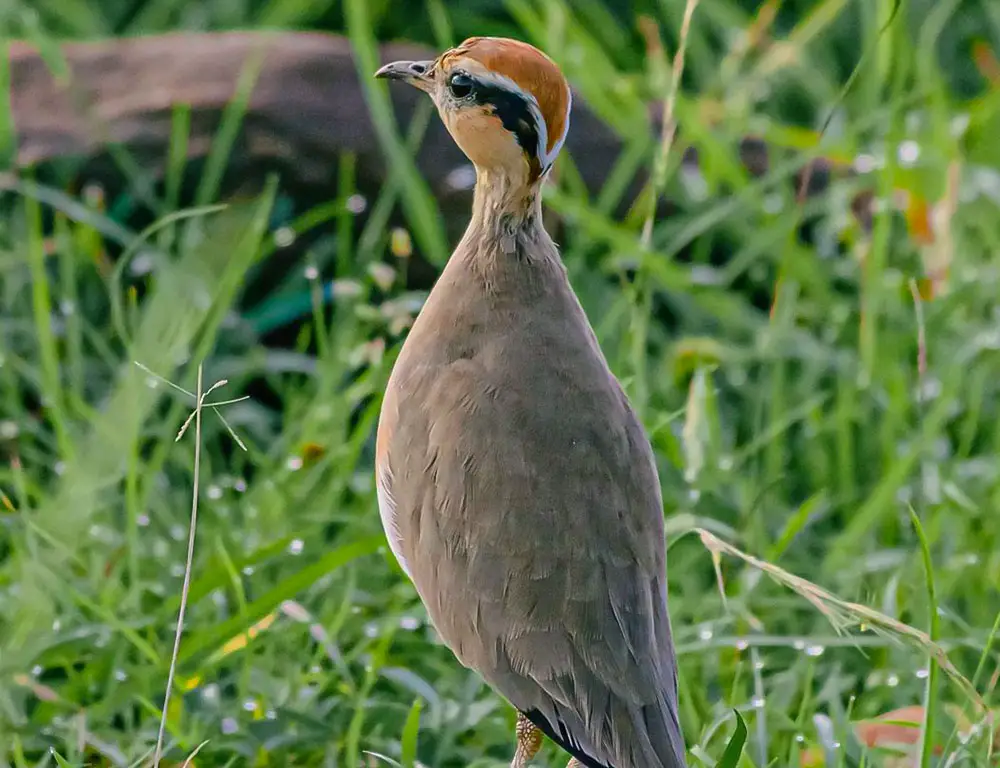
Physical Characteristics of Glareolidae
The Glareolidae family, encompassing coursers and pratincoles, displays several distinctive physical characteristics that contribute to their unique adaptations and behaviors.
Here are some key features:
Size and Body Shape
Glareolidae birds are generally small to medium-sized, ranging from around 17 to 30 centimeters in length. They possess streamlined bodies, which aid in swift flight and agile movement on the ground.
Wings
Glareolidae species have long, pointed wings that are well-suited for fast and maneuverable flight. This wing morphology allows them to catch insects in flight and undertake long-distance migrations.
Legs
One of the most notable features of Glareolidae birds is their long and slender legs. These legs are adapted for running on the ground, enabling them to chase after prey and navigate across various types of terrain, including sandy or rocky substrates.
Feet
Glareolidae birds often have partially webbed feet, particularly in species that frequent wetland habitats. These semi-webbed feet aid in walking on soft or muddy ground and may also facilitate swimming or wading in shallow water.
Beak
Their beaks are typically short and stout, suited for capturing insects close to the ground or snatching them out of the air. The shape of the beak may vary slightly among species, reflecting differences in feeding habits and prey preferences.
Coloration
Glareolidae birds often exhibit cryptic coloration, with patterns and hues that help them blend into their surroundings. This camouflage is essential for species that nest on the ground or forage in open habitats, protecting them from predators.
Tail
The tails of Glareolidae birds vary in length and shape among different species. Some have relatively short, square tails, while others may have longer, forked tails. The tail shape can influence maneuverability during flight and may also play a role in courtship displays.
Habitat and Distribution of Glareolidae
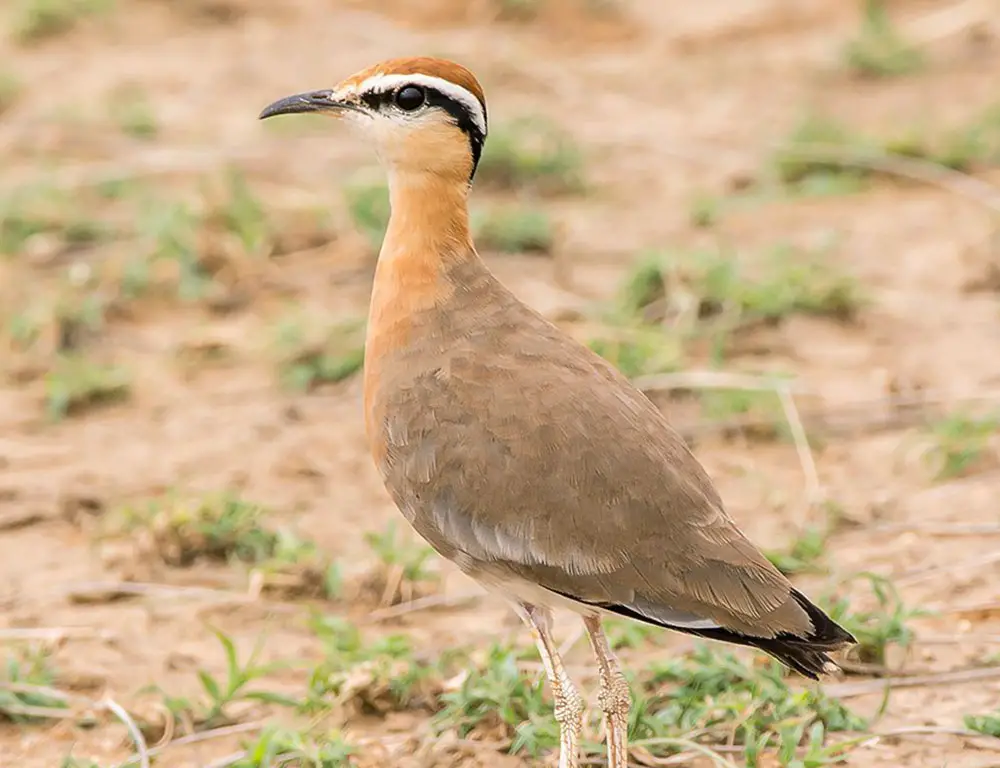
The Glareolidae family, which includes coursers and pratincoles, exhibits distinct habitat preferences and a wide geographical distribution.
Here’s an overview of their habitat and distribution:
Preferred Habitats
Glareolidae birds are typically found in open habitats such as grasslands, savannas, semi-deserts, and areas with sparse vegetation. They prefer environments where they can easily maneuver on the ground to catch insects.
These birds may also inhabit nearby water bodies such as riverbanks, lakeshores, and coastal marshes.
Nesting Preferences
Pratincoles and coursers have different nesting habits. Pratincoles typically nest on the ground, often in areas with short vegetation or gravelly substrates. Coursers, on the other hand, lay their eggs directly on bare ground without constructing nests.
They may choose sandy or rocky terrain for nesting.
Geographical Distribution
Glareolidae species are distributed across multiple continents, including Africa, Asia, Europe, and parts of Australia and the Middle East. They inhabit various climates and ecosystems, from arid deserts to humid wetlands.
- Africa: Many Glareolidae species are native to Africa, where they are widespread across the continent. They are commonly found in open habitats such as savannas, grasslands, and semi-deserts. African countries such as Kenya, South Africa, Botswana, and Namibia host diverse populations of Glareolidae birds.
- Asia: Glareolidae birds are also prevalent, with species distributed from the Middle East to Southeast Asia.
They inhabit various habitats, including open grasslands, agricultural fields, and coastal areas. Countries such as India, Pakistan, Thailand, and China are home to multiple species of Glareolidae. - Europe: While less diverse than Africa and Asia, Glareolidae species are still present in certain regions. They are often found in southern and eastern Europe, particularly in countries with suitable open habitats and wetland areas—European countries such as Spain, Greece, Romania, and Bulgaria host populations of Glareolidae birds.
Migration
Some Glareolidae species exhibit migratory behavior, undertaking seasonal movements between breeding and wintering grounds. Changes in food availability or environmental conditions often trigger these migrations.
The Collared Pratincole, for example, is known for its long-distance migrations from breeding areas in Europe and Asia to wintering grounds in Africa.
Diet and Feeding Habits of Glareolidae
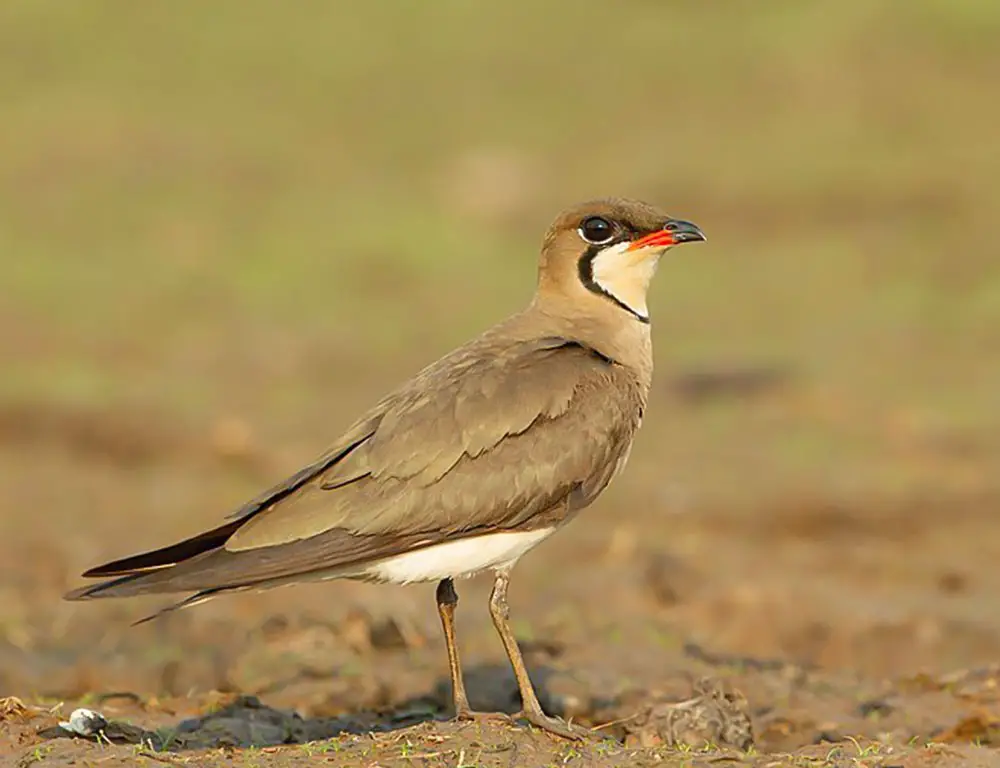
The diet and feeding habits of Glareolidae birds, including coursers and pratincoles, are primarily centered around their insectivorous nature. Here’s a detailed look:
Insectivorous Diet
Glareolidae birds are predominantly insectivores, meaning their diet consists mainly of insects. They feed on various flying insects, including beetles, grasshoppers, flies, moths, and other arthropods.
This diet is supplemented by terrestrial insects that they find on the ground while foraging.
Aerial Foraging
One of the key feeding behaviors of Glareolidae birds is aerial foraging. They are skilled aerial hunters, capable of catching insects in flight. Using their agile flight and sharp vision, they perform acrobatic maneuvers to capture flying insects in mid-air.
This behavior allows them to exploit a rich food source while minimizing energy expenditure.
Ground Foraging
In addition to aerial foraging, Glareolidae birds also engage in ground foraging. They use their long legs and quick movements to run across open terrain, searching for insects on the ground.
They may chase after prey, pecking at insects they encounter or probing into the soil to uncover hidden prey items.
Habitat Selection
Glareolidae birds often inhabit open habitats such as grasslands, savannas, semi-deserts, and areas near water bodies. These habitats provide abundant insect prey and ample aerial and ground foraging space.
Some species may also frequent agricultural fields, pastures, and fallow lands where insects are plentiful.
Crepuscular Activity
Glareolidae birds are crepuscular which is most active during dawn and dusk. This activity pattern coincides with peak insect activity, allowing them to maximize their foraging efficiency while avoiding the heat of the day in arid environments.
Adaptations for Feeding
Glareolidae birds possess several adaptations that aid in their feeding habits. Their long, slender bills are well-suited for capturing insects, whether in flight or on the ground.
Their agile flight and swift ground locomotion enable them to pursue and capture prey precisely.
Reproduction and Nesting of Glareolidae
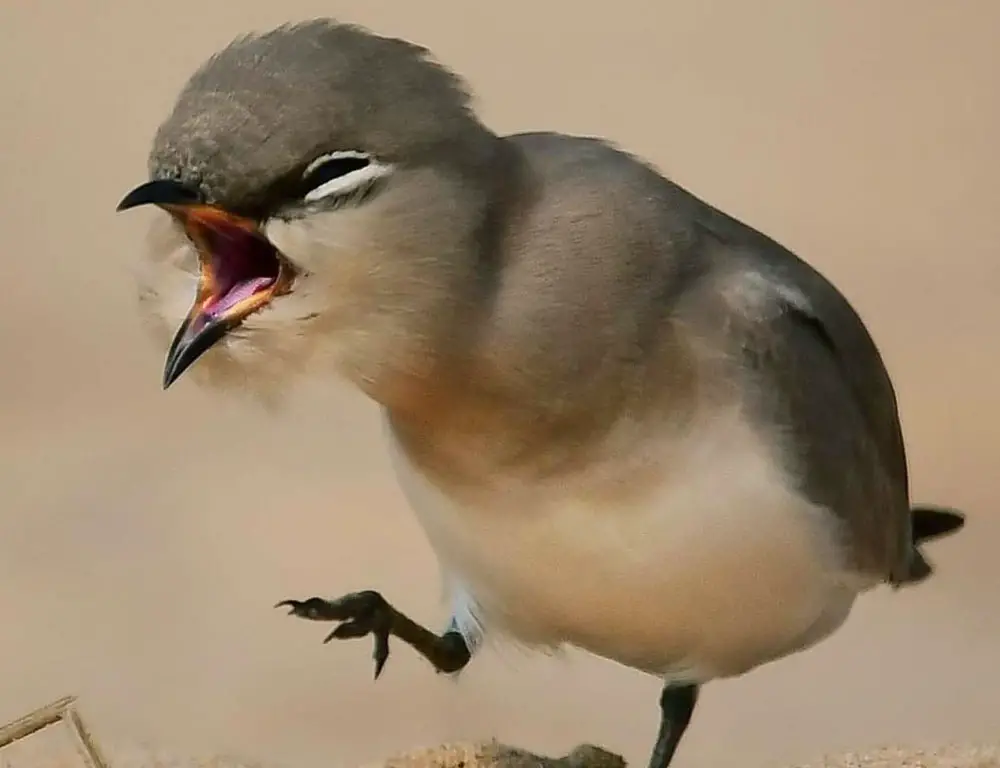
The reproduction and nesting behaviors of Glareolidae birds, including coursers and pratincoles, are intriguing aspects of their life history. Here’s an overview:
Breeding Season
Glareolidae birds typically breed during the warmer months, often coinciding with the rainy season in their habitats.
The timing of the breeding season can vary among species and geographic regions, depending on factors such as food availability and environmental conditions.
Monogamous Pairing
Glareolidae species commonly form monogamous breeding pairs, with individuals staying together throughout the breeding season. Some species may even exhibit long-term pair bonds, remaining paired year-round.
Courtship Displays
During the breeding season, Glareolidae birds engage in elaborate courtship displays to attract mates and establish pair bonds. These displays can include aerial acrobatics, vocalizations, and visual cues such as plumage displays or territorial behavior.
Nesting Habits
Glareolidae birds exhibit diverse nesting habits, with some species preferring ground nesting while others may construct simple nests or use natural depressions in the ground.
Pratincoles, for example, typically nest on the ground in open habitats, laying their eggs directly on bare ground or gravelly substrates.
Egg Laying
Glareolidae species typically lay small clutches of eggs, ranging from 2 to 4 eggs per clutch, although clutch size can vary among species. The eggs are often cryptically colored to blend in with the surrounding environment, providing camouflage against predators.
Incubation and Parental Care
After the eggs are laid, both male and female Glareolidae birds may take turns incubating the eggs, with each parent sharing the responsibilities of nest attendance and feeding the young after hatching.
The incubation period varies among species but generally lasts for several weeks.
Development of Chicks
Once the eggs hatch, the parents continue caring for the young chicks, feeding them regurgitating food, and protecting them from predators. The chicks grow rapidly and can typically leave the nest and begin foraging on their own within a few weeks of hatching.
Fledging and Independence
After the chicks have fledged, they gradually become more independent, learning to forage and fend for themselves under the guidance of their parents. Eventually, they reach maturity and may disperse to find their own territories and mates.
Conservation Status of Glareolidae
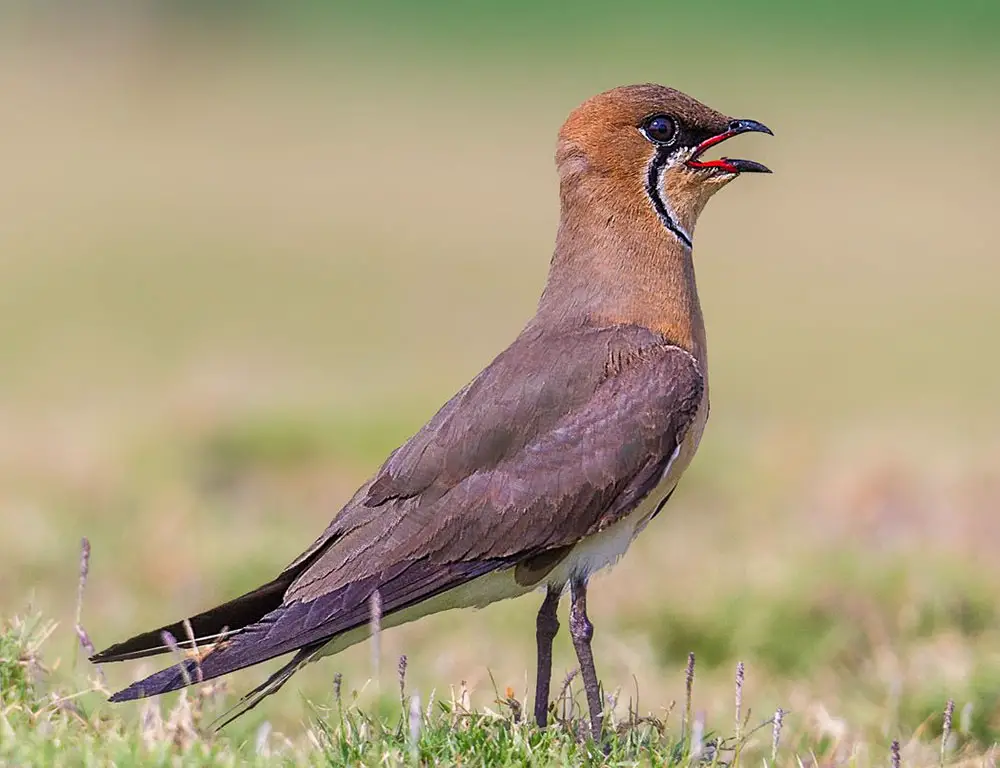
The conservation status of Glareolidae birds, including coursers and pratincoles, is of growing concern due to various threats to their habitats and populations.
Here’s an overview of their conservation status, threats, and conservation efforts:
Threats
- Habitat Loss: One of the primary threats facing Glareolidae species is habitat loss and degradation. They primarily inhabit grasslands, wetlands, and desert ecosystems, which are increasingly being encroached upon by human activities such as agricultural expansion, urbanization, and infrastructure development.
- Climate Change: Climate change poses another significant threat to Glareolidae birds, affecting their habitats and food sources. Temperature and precipitation patterns can alter the availability of suitable breeding and foraging grounds, potentially leading to population declines.
- Direct Human Interference: Glareolidae birds are also vulnerable to direct human interference, including egg collection and hunting. These activities can harm local populations, particularly in areas where birds are already facing habitat pressures.
Conservation Efforts
- Habitat Protection: Conservation efforts aimed at protecting the habitats of Glareolidae species are crucial for their survival. Establishing and managing protected areas, such as Important Bird Areas (IBAs), can provide safe breeding grounds and foraging habitats free from disturbance.
- Legislation and Enforcement: Some regions have implemented laws and regulations to prohibit or regulate egg collection and hunting of Glareolidae birds. Enforcement of these laws is essential for preventing illegal activities that threaten bird populations.
- Awareness and Education: Raising awareness about the conservation status of Glareolidae birds and promoting sustainable practices is key to garnering public support for their protection. Educational initiatives, outreach programs, and community engagement efforts can help foster appreciation for these birds and their importance in ecosystems.
- Captive Breeding Programs: Zoos and conservation organizations participate in captive breeding programs for endangered Glareolidae species. These programs aim to maintain genetic diversity and establish assurance populations to safeguard against extinction.
Global Commitment
There is a growing commitment among conservation organizations, governments, and individuals to protect Glareolidae species and their habitats.
Collaboration across sectors and regions is essential for implementing effective conservation strategies and addressing these birds’ complex challenges.
Conclusion
The Glareolidae family presents a captivating glimpse into the intricate tapestry of our global ecosystem. Their semi-webbed feet afford them adaptability, straddling between terrestrial and aquatic realms.
Their selective nesting habits, often near water bodies, underscore their resourcefulness. Moreover, their insectivorous diet not only sustains them but also plays a vital role in pest control, highlighting their ecological significance.
Studying Glareolidae unveils the diversity and interconnectedness of life forms on our planet. As we appreciate these birds, we acknowledge nature’s remarkable capacity for adaptation and evolution.
Through understanding and preserving the Glareolidae family, we embrace the intricate dynamics of our natural world, fostering an enduring appreciation for its wonders.